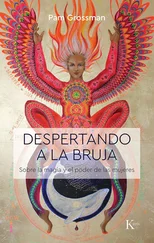(5) Typing Tutor
(6) Adric’s Tomb
(7) Snake
(8) Hangman
> 6
Welcome to Adric’s Tomb!
v1. 8
press HJKL to move
Seek ye the Crown!
Copyright Black Arts Productions 1983
Adric’s Tomb was a very primitive dungeon game, all glowing green dots and dashes, the old bones of the virtual realities of the nineties. Rows and columns of alphanumeric characters on a black screen were arranged in a simple maze that only to a very charitable imagination would stand in for the mossy stone walls and dank, silent corridors where Adric’s body lay, no doubt in the form of a melancholy percentage sign. At the center of the maze there stood a single plus sign, +, and that was you. Whee. Hard to believe this thing shared a code base with the real-time 3-D world of fourteen years later.
It was easy to laugh at, like the first flying machines, with their pedals and stacks of redundant wings. But at the same time, the simulation had the eloquence of a cave painting. Once I’d touched it, I’d touched a program powered by the same imaginative electricity that powered every video game ever made, except this one was that much closer to the source. If the tech was primitive, the urge to make it shone through that much more strongly.
I waited for something to happen, then realized it was waiting for me. This was a turn-based world. I pressed H on the keyboard and the plus sign advanced one space to the left, then stopped. Time ground forward one turn, and then halted until I pressed the key again.
I had a sudden rush of sense memory—the smell of paint fumes, lingering school lunches, damp wool drying after late autumn rain. I really did know these people, once upon a time, it’s just that I knew them when we were different people; when I was a different person, one that I’d tried for a long time to forget. When I saw them again we were all changed enough that I could feel safely at that remove—we were all older, fatter, clever enough that we could wink and say, well, at least we’re much cleverer than the people we used to be, right? But Adric’s Tomb hadn’t changed.
We met in the fall, the four of us—Darren, Simon, Lisa, and me. We’d all signed up for the intro to programming elective as sophomores. It was taught by a slightly shabby thirtyish math teacher named Kovacs, an enthusiast who had a prominent mustache and published regularly in Creative Computing magazine. He was dismissed a few years afterward for smoking pot.
We sat at the back, not together but away from the in crowd, the clique of seniors in advanced integral calc who took all of Kovacs’s classes, whatever they were. I knew them by sight: Simon and Darren, the mismatched friends, and Lisa Muckenhaupt, her long hair still wet from the dash across the quad. She was known for reading while walking the two miles to and from junior high, paperback science fiction held in front of her. She wore a lot of long, deeply unfashionable proto–Ren faire dresses, and had, as far as I knew, no friends whatsoever.
I would love to say I remember why I went, but probably it was just a résumé builder. I was already looking ahead to college applications. I never found out exactly why the others were there. Lisa was a math jock, so it made sense. For Darren and Simon it was one of those mysterious decisions that emanated out of their collective mind.
We split into groups of four, one group per computer. Kovacs shoved us together without thinking about it. We stood around the computer, shooting tentative glances at one another. I thought Lisa was going to step forward, but Darren smiled and pulled the chair out and gestured for Simon to sit. We started in on the canonical first assignment: write and compile a program to display the words Hello, world . After which Darren pushed us forward into: write and compile a program to display the words ANARCHY RULES .
Lisa, who evidently had a computer at home, leaned over in front of Simon, hair brushing the keyboard, and added a looping structure: write and compile a program to display the words ANARCHY RULES an infinite number of times. Mission accomplished.
At the end of class, Kovacs explained that each group would be responsible for a semester project, a long-form complete program of our own design.
Darren said, “We should do a game.”
“Is that allowed?” asked Lisa.
“Why not?” Darren countered.
Simon nodded. “We should do it.”
“What kind of game?” I asked.
“Like D&D, ” Simon and Darren said in unison.
“Just as long as it’s not stupid. What do you think, Russell?” She looked at me.
“Fine, I guess,” I said. I barely knew what Dungeons & Dragons was, and I didn’t have any other ideas, so why not?
“Couldn’t we do science fiction?” Lisa asked. “Did you guys read Foundation ?” I’d learn later that Lisa had an incomprehensible bond with the long, dry, future-history sagas of Asimov and Olaf Stapledon.
In the end it came down to a coin flip, fantasy versus science fiction. Fantasy won, and we wrote down our phone numbers for each other so we could meet later. In a year of firsts, it was the first time I received a girl’s phone number in her own jagged handwriting. It was the second time Simon had touched a computer, and he left the classroom with Mr. Kovacs’s copy of Structured COBOL Programming, second edition, by Nancy and Robert Stern, under his T-shirt.
Could you make a computer imagine an entire world? How would you start? A generation of people would wrestle with this problem—they’re still wrestling with it. At that point Simon had only seen or touched a computer twice in his life. He had played maybe two or three computer games at most. He came to the Thursday class with an actual computer program.
“Look look look,” he said. “I’ve got it.”
It wasn’t clear whether Simon had slept since the last time we’d seen him. He had about nineteen pages of smudged, crossed-out writing on notebook paper, text bracketed and underlined, arrows connecting the segments across pages. He spent the first forty minutes of class just typing it in as we watched.
It was terrible code, as I now understand these things—no architecture, just one big glob of undigested, “uncommented” instructions looping back and forth.
I leaned forward, waiting to see what this odd, obsessive personality had brought us. Darren looked nervous for his friend; Lisa, skeptical. On the third try, Simon’s program compiled and ran. We saw a grid of dots on the screen, thirty-two by thirty-two, except the dot in the top left corner was replaced by a plus sign, a +.
“I don’t get it,” I said.
“It’s the world. There are a thousand and twenty-four places you can be in the world,” he said. He showed us how the plus sign could move around from grid point to grid point. “And that’s you.”
I didn’t know it, but what I was seeing was the equivalent of the first grainy black-and-white image of Mars sent from the Viking lander seven years before—it was our first glimpse of the primal Endorian landscape. We didn’t have access to a graphics mode, so everything was drawn with alphanumeric characters. You could use the H, J, K, and L keys to go left, down, up, and right. (The HJKL movement scheme was copied from an antediluvian text editor called vi. Years later, at Black Arts, using vi as your principal text editor was one of a hundred things you could do to cultivate a hardcore image.)
And if there could be a “you” in the world, there had to be monsters, or it wasn’t a fantasy world at all. The first species of monster was an ampersand, a &, and the first thing its AI ever knew was the rule that every time you moved, the & would move one space toward your previous position (and time was divided into turns; Realms of Gold wouldn’t make the jump to real-time simulation until a decade later). And if the + moved on top of the &, the & was erased. So the first “human” inhabitant of Realms of Gold was the lone, all-conquering, invulnerable plus sign—Brennan’s distant forebear—which roamed the primordial landscape and against which no ampersand could stand.
Читать дальше
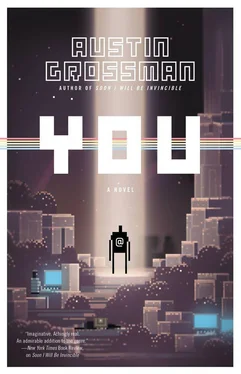
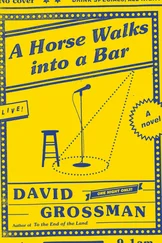
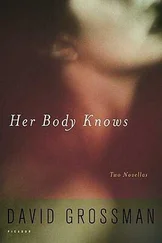
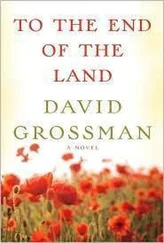

![Ally Carter - [Gallagher Girls 01] I'd Tell You I Love You But Then I'd Have to Kill You](/books/262179/ally-carter-gallagher-girls-01-i-d-tell-you-i-lo-thumb.webp)

